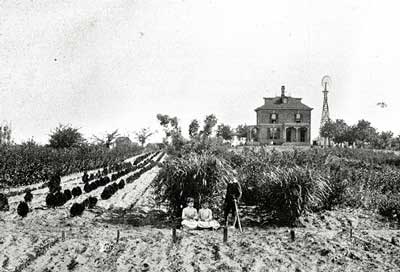
T.V. Munson & How Texas Saved The Whole Freaking Wine World: But, How Did Things Get This Screwed Up?
Last week, I read Ron Saikowski’s story on the Courier of Montgomery website (Courier article on T.V. Munson) titled “History in the making during Texas Wine Month”. In this article, he discussed perhaps the highest point in Texas’s grape legacy owed to the acknowledged “Grape Man of Texas” – Thomas Volney (T.V.) Munson.
While going through this Courier article, I was shocked to read:
“T.V. Munson showed the French how to save their vineyards by using Mustang grape root stock from Ingleside, Texas as the root base for grafting the vitis vinifera grape vines.”
— — — — —
Texan’s Need to Know: Backgrounder on Munson, Phylloxera and the French Mission to Texas
Munson, while a resident of Denison, Texas, became a renowned grape horticulturalist and highly acclaimed botanist for this work locating, categorizing and hybridizing native grape species. The overriding goal in both Munson’s research and horticultural business was to make Texas grapes a year round cash crop for our local farmers as table grapes, preserves and wine – although Munson reportedly did not drink.
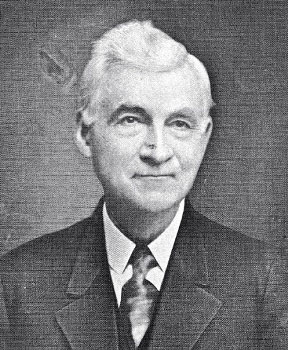
In this pursuit, Munson is reported to have traveled over 10,000 miles (and perhaps if you believe some accounts….over 50,000 miles) on horseback in Texas noting locations, soil types and taking native grape vine cuttings back to Denison. There he rooted and grew them and studied their characteristics. He also hybridized native Texas grapes with other varieties of native American grapes, and with European (vinifera) wine grapes.
In the mid-1800s, the infestation of the French and European vineyards by Phylloxera, a root louse common in America, caused an agricultural disaster of epic proportions. It has been reported that by the 1870’s from 75 to 90% of the European vineyards were laid fallow from this infestation. After many years of study, it was learned that Phylloxera was actually imported in the soil and roots of American plants sent back to European for research and gardens. They also realized that to survive in the wild, native American grape vines must be resistant to Phylloxera and figured that they might serve as root stock for the European vines (Vitis vinifera) used to make wine.
When alternative attempts at Phylloxera eradication failed, a French delegation was assembled under the leadership of Pierre Viala, professor of viticulture at Montpellier l’Institut National Agronomique, who was already in correspondence with Munson. The mission was sent out to visit grapevine specialists all across the United States with a goal to find a Phylloxera-resistant root stock that could be used in Europe. This goal was critical since most of the grapevine cuttings sent from American up to that point did not thrive in the European soils. The delegation members knew of Munson’s work with native grapes in Texas. So, it was not surprising when this group showed up at his Denison doorstep seeking his assistance.
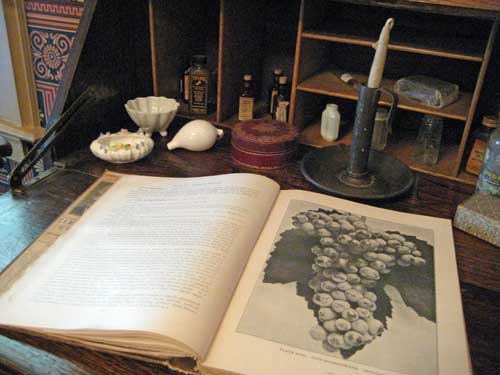
— — — — —
Why I was shocked to read:
“T.V. Munson showed the French how to save their vineyards by using Mustang grape root stock from Ingleside, Texas as the root base for grafting the vitis vinifera grape vines.”
While researching my book, The Wineslinger Chronicles: Texas on the Vine, one of my key references on Munson was the book, Grape Man of Texas, by Cherrie McLeRoy and acknowledged Munson expert, Dr. Roy Renfro. The book by McLeRoy and Renfro chronicles the life of Thomas Volney Munson and his scientific work on the origins of American viticulture from his early pre-Texas days through his involvement with the French mission and his later publication of the seminal book on early American viticulture, Foundations of Grape Culture.
What made me come unglued is that nowhere in the pages of McLeRoy and Renfro’s book dedicated to Munson’s dealings with the French delegation in the McLeRoy and Renfro book is ANY reference made to either Ingleside, Texas or the Mustang grape!
The fact of the matter is that Munson sent the Viala delegation from Denison down into central Texas to find the native American grape rootstock that he perceived to be best adaptable to conditions in France and throughout Europe. He sent the delegation to the Texas hill country located on the eroded hills on the ancient Edwards plateau, as described by Viala as having “wild chalky limestone hills” and later by Munson as having “limey Cretaceous soils”. This was precisely the condition that Munson knew the needed rootstock would confront when it got into French vineyards and why many previous rootstocks had failed once there.
The location in the hill country where Viala stopped to get their vine stock was in the Temple-Belton area in Bell County (a bit north of modern-day Georgetown, Texas) near a hill known to the locals as “Dog Ridge”.
As indicated in the McLeRoy and Renfro book, the records of Viala clearly show that:
- The samples Viala obtained for shipment back to France were initially a cross of Vitis berlandieri and Vitis Rupestris-Candians, given the common name “Dog Ridge”, and NOT of the Mustang grape, which is from a difference species of grapevine known as Vitis mustangensis.
- Eventually, specimens of Vitis berlandieri, Vitis Cinerea and Vitis condifolia (all Texans) were sent by Viala back to France for rootstock grafting studies.
- The hill country site near Belton, Texas, where the vine stock was actually taken is NOWHERE near the coastal town of Ingleside, Texas, near Corpus Chrisi nearly 250 miles due south of Belton .
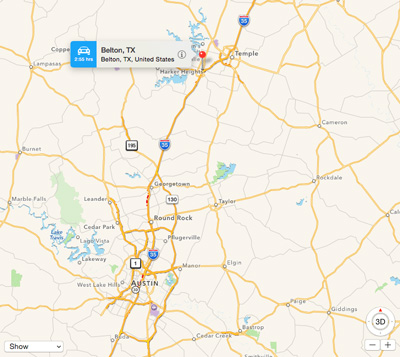
The Horror: Propagation of Misinformation
How did this misinformation get started and propagated? Actually, I don’t know its origin. But, I know that it was spread from links on the Internet, thus causing the bad information to be listed on many websites and bringing it to the writer of the Courier article.
Some of the misinformation sites that undoubtedly lead up to the Courier article include Wikipedia, the Waxahachie Journal, and even SchoolBookLibrary.com. Another misinformation site that I found was surprisingly Chef Mike’s Culinary Blog who uses the website GeorgetownChef.com (presumably from Georgetown, Texas, just a short ride down I-35 from Belton where the native Texas grapevines were actually found. [VT – I did not include the links to these site with misinformation for fear that I might promote the inappropriate use of this these misstatements of history.]
A website that correctly describes the Munson legacy and the results of the Viala mission is from Texas A&M and is an article written by the acclaimed Texas pecan horticulturalist Dr. George Ray McEachern who was also called upon to support the Texas wine growers in the early days of the modern wine industry in Texas. The article titled A Texas Grape and Wine History can be found at:
http://aggie-horticulture.tamu.edu/southerngarden/Texaswine.html
For his work, The French government presented Texas’s T.V. Munson with the Chevalier du Merite Agricole of the French Legion of Honor.
http://howdyyall.com/Texas/TodaysNews/index.cfm?GetItem=1466
— — — — —
For the Rest of the Story: Was Texas Root Stock a Success?
If I can paraphrase this line from the famous radio commentator Paul Harvey, I’d like to tell the rest of this amazing Texas story as accounted in the book by McLeRoy and Renfro.
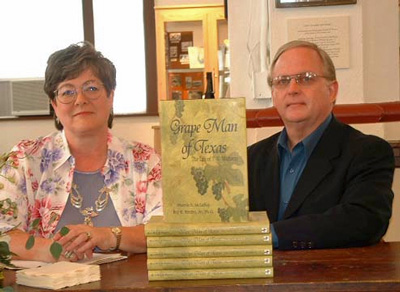
Following the Viala expedition, Munson’s horticultural business provided the French tens of thousands of cuttings from his own stock that included Vitis berlandeiri. He also sold several Vitis labrusca blends that were not successful. It appears that the Texas Vitis berlandeiri rootstock was in fact the preferred species, but grafting it to European Vitis vinifera vine stock was a bit problematic.
The French eventually started to develop the own rootstocks that were based on American (mostly Texas) grapes but cross-pollinated with European varieties producing hybrids that reportedly made the grafting process easier. However, in the words of McLeRoy and Renfro:
“What has proved enduring in this long war against Phylloxera is grafting, particularly grafting with rootstock of ultimately American origin. The French used the (Vitis) berlandeiri and other Texas grapes recommended by Munson and the (Vitis) rupertris which Hermann Jaeger (a Munson colleague) supported, as well as (Vitis) riparia, to create hybrid rootstocks for grafting.”
From the 1800s on through to today’s modern and global wine industry, the rootstocks used still contain DNA attributable to Texas native grapes. From this, they provide varying degrees of resistance to Phylloxera, limey and/or salty soils, and drought while also helping to manage grapevine productivity (crop load versus canopy growth). What Texans should be proud of is what Munson understood about the linkage between the soils of central Texas and those in the French vineyards, a key aspect in the success of modern-day rootstocks in Europe and around the world.
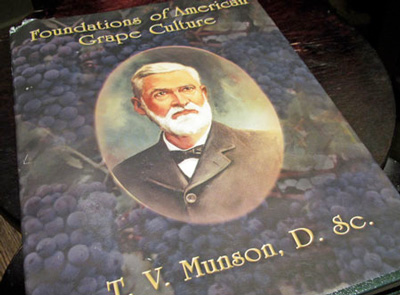
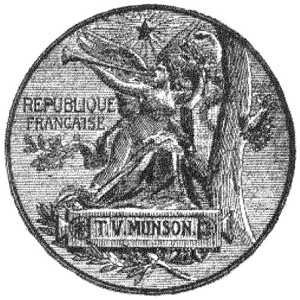

Another website with false information on the site of Texas rootstock sent to France in the 1880s is:
http://www.sawis.co.za/info/download/Vinintell_March_2015_5721.pdf
From R.L. Winters…
You are quite correct. What little historical information there is indicates that TVM either rode with or instructed Viala as to the location of the Berlandieri. They most certainLy didn’t travel 250 miles down to the coast. The location was factually in Bell County.
There are existent records that indicate the number of rootstocks produced from that hill (Dog Ridge) was in the area of 100,000. As to the hybridized rootstocks I’ve not seen seen anything that supports additional shipments other than the Berlandieri.
Geology was one of TVMs prolific list of skills. He apparently had spent a great deal of time contemplating paleo-geology as well. It’s not too surprising that he had filed away in his memory that the Berlandieri was immune to the chlorosis produce by calcareous soils.
The failed attempts on the part of the French prior to Munson intervention was largely due to misconception that because the root sheath of the American Vitis was generally impervious to the phylloxera insect that they had solved the problem. The Concord was selected because of its wide spread popularity and it’s rather vinifera like characteristics. They failed to take into account adaptability to specific soil types. They focused on Labrusca (Concord) as their target rootstock and historical records support the assertion that they had produced in excess of one million grafted vines in what came be know as the “Great Concord Disaster”.